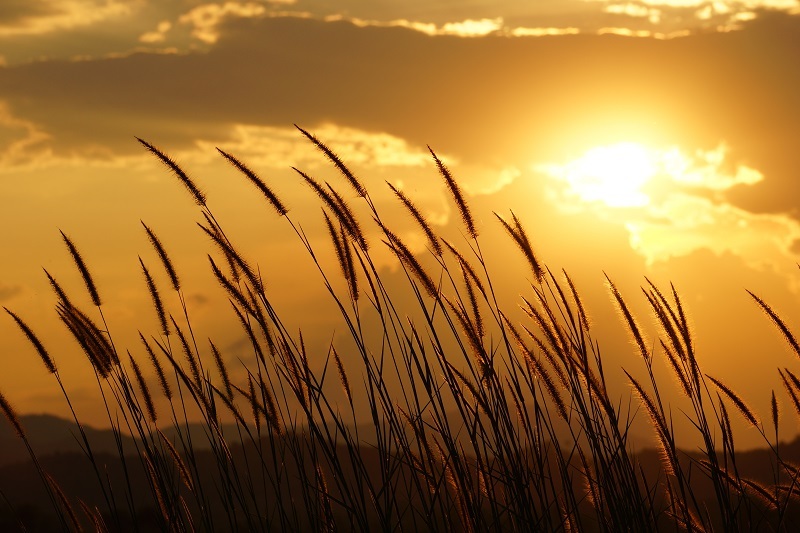Nurturing Your Poinsettias for Extended Beauty
Posted on 02/07/2025
Nurturing Your Poinsettias for Extended Beauty: An In-Depth Guide
If you've ever brought home a vibrant poinsettia for the holidays, you know how their cheerful red, pink, or white bracts instantly brighten up a room. But what happens once the holidays are over? With proper care, nurturing your poinsettias for extended beauty is achievable and satisfying. This comprehensive article will show you how you can enjoy these stunning plants for months, and even years, with expert care tips and easy-to-follow routines.
Understanding the Poinsettia's Unique Beauty
The Euphorbia pulcherrima, commonly known as the poinsettia, is native to Mexico and Central America. Its iconic "flowers" are actually colored bracts, while the true flowers are the tiny yellow centers. Today, there's a dazzling array of colors and varieties beyond classic red--including marbled, cream, and even speckled cultivars. Knowing how to care for poinsettias isn't reserved for the winter holidays. With the right steps, you can prolong your poinsettia's brilliance far beyond December.

Essential Tips for Nurturing Your Poinsettias for Extended Beauty
Ensuring your poinsettia's long-lasting beauty requires attention to their light, water, temperature, and feeding needs--each unique to this festive plant. Let's break down the process to keep your poinsettias thriving all year:
Proper Lighting for Prolonged Vibrancy
- Bright, indirect sunlight is ideal for poinsettias. Place your plant near a sunny window but away from direct sunlight, which can scorch the bracts and foliage.
- Rotate your plant regularly to ensure all sides receive light, encouraging even growth and coloration.
- After the holidays, as daylight hours lengthen, continue providing ample light to support healthy new growth.
Watering Wisely for Lasting Health
- Water only when the soil surface feels slightly dry to the touch. Poinsettias dislike over-saturated roots.
- Ensure your pot has drainage holes and never let your poinsettia sit in standing water--root rot is a danger!
- During the active growing season (spring and summer), your plant may need water more often. In winter, allow the soil to dry a bit more between waterings.
Maintaining the Perfect Temperature for Poinsettias
- Keep poinsettias in temperatures between 65?F and 75?F (18?C-24?C) during the day. Night temperatures should not drop below 60?F (15?C).
- Avoid sudden temperature changes and drafts--never place a poinsettia near a heater, fireplace, or chilly window.
- Stable, warm environments encourage your poinsettia to retain its colorful bracts for months.
Humidity: The Unsung Hero in Poinsettia Care
- Poinsettias prefer humidity! Run a humidifier in dry environments or place the pot on a tray of pebbles and water to boost moisture in the air.
- If your home is dry during the winter, mist around (but not directly onto) the plant to prevent leaf drop.
Feeding and Fertilizing for Prolonged Poinsettia Beauty
To ensure lasting color and health, feeding your poinsettia appropriately plays a big role. Do not fertilize while the plant is in full bloom (usually from November through January).
- Start fertilizing once new growth appears in late winter or spring. Use a balanced, all-purpose houseplant fertilizer, diluted to half strength, about every 2-4 weeks during active growth.
- Cease fertilization when the plant's growth slows in autumn and before bract coloration begins.
Pruning and Shaping: Encouraging Bushier Growth
Pruning is key when nurturing your poinsettias for extended beauty, encouraging new shoots and a compact, bushy shape.
- Once the colorful bracts begin to fade (usually around March or April), cut the stems back to 4-6 inches above the soil.
- This drastic prune may look harsh, but it jumpstarts vigorous new stems and leaves.
- Pinch off the growing tips of new shoots every few weeks through summer to maintain fullness and prevent legginess.
Year-Round Poinsettia Care Calendar
Here's a brief guide to maximizing your poinsettia's lifespan throughout the year:
- Winter (December-February): Enjoy the colorful bracts, keep soil slightly moist, and provide indirect sunlight (avoid fertilizer).
- Spring (March-May): Once bracts fade, prune plants and repot if roots are crowded. Begin fertilizing and encourage new growth.
- Summer (June-August): Place poinsettias outdoors in partial shade if temperatures are mild. Pinch shoots for bushier growth and maintain regular watering/fertilizing.
- Fall (September-October): Prepare for rebloom: reduce fertilizer, return indoors before temperatures drop, and initiate the dark treatment (explained below) for new bract coloration.
The Secret to Holiday Color: Reblooming Your Poinsettia
If you wish to nurture your poinsettias for extended beauty into a second holiday season, you'll need to trigger blooming. Poinsettias are "short-day" plants, meaning they require long, uninterrupted nights to develop colored bracts.
Steps to Encourage Reblooming:
- Beginning in late September or early October, place your poinsettia in complete darkness for 14-16 hours each night. You can do this by covering it with a box or placing it in a closet.
- During the day, return the plant to bright, indirect sunlight for the remaining hours.
- Repeat this dark treatment every night for 8-10 weeks. Any interruption--even from a brief light--can prevent flowering and coloring.
- Once color returns to the bracts, resume regular care and display your poinsettia as usual!
Repotting Your Poinsettia for Long-Term Health
As your plant grows, you may need to repot your poinsettia to maintain health and vigor. Here's how:
- Choose a new pot only 1-2 inches larger in diameter than the current one to prevent waterlogging.
- Use a well-draining potting mix (look for formulas marked for indoor houseplants).
- Gently loosen the root ball and remove old soil before repotting.
- Water thoroughly after transferring, ensuring the excess drains away.
Common Mistakes to Avoid When Caring for Poinsettias
Even the most attentive caretakers can make mistakes. By avoiding these common pitfalls, you'll enjoy longer-lasting beauty from your poinsettia:
- Overwatering: This is the number one reason for poor health. Always check soil moisture before adding water.
- Insufficient Light: Too little light results in pale, leggy plants with dropping leaves.
- Drafts or Heat Exposure: Sudden changes in temperature or air flow can shock the plant, leading to leaf loss.
- Lack of Humidity: Dry indoor air can cause leaves to curl and eventually fall.
- Forgetting the Dark Treatment: Without long, uninterrupted nights, your poinsettia will not rebloom or color up for the holidays.
Troubleshooting: Solving Common Poinsettia Problems
- Yellow, Dropping Leaves: Usually due to overwatering or exposure to cold drafts. Adjust your plant's environment accordingly.
- Leggy Stems: Insufficient light or failure to pinch new growth. Move closer to a bright window and prune regularly.
- Wilting Plants: Could signal both under- or overwatering. Check the soil and drainage immediately.
- Insect Infestations: Poinsettias can attract whiteflies, mealybugs, and spider mites. Rinse leaves or use insecticidal soap as needed.
Are Poinsettias Poisonous?
Many worry about the safety of poinsettias around children and pets. While not truly poisonous, all parts contain a milky sap that can cause mild irritation or digestive upset if consumed. Wash hands after handling and keep plants out of reach for pets who like to nibble.
Creative Ideas for Displaying Your Long-Lasting Poinsettias
Make the most of your successfully nurtured poinsettia by displaying it in unique ways:
- Combine different poinsettia varieties for a colorful, festive arrangement.
- Use tall, elegant planters to complement modern decor.
- In warmer climates, plant them outdoors for year-round color in the landscape.
- Pair your poinsettias with evergreens, ivy, or holiday ornaments for creative centerpieces.

Frequently Asked Questions: Extending Your Poinsettia's Beauty
How long will my poinsettia last with proper care?
With attentive nurturing, poinsettias can remain beautiful and healthy for many months. With advanced care and reblooming techniques, some enthusiasts keep them thriving year after year!
Can I put my poinsettia outside in summer?
Yes--after all risk of frost is gone, move your plant to a shaded outdoor spot. Gradually acclimate it to avoid sun scorch and remember to bring it back inside before chilly nights return.
Why is my poinsettia losing leaves?
Leaf drop is often caused by sudden changes in light, temperature, or overwatering. Gradual transitions and stable indoor conditions help prevent leaf loss.
Conclusion: Enjoying Extended Poinsettia Beauty Year After Year
Poinsettias are not just a fleeting symbol of the holidays--they can become long-lasting, cherished houseplants with some thoughtful attention. Nurturing your poinsettias for extended beauty doesn't require a green thumb, just a blend of proper watering, lighting, and patience for their unique annual cycle. Whether you're interested in reblooming for the next holiday or simply enjoying their lush foliage year-round, following these tips will allow you to prolong your poinsettia's vibrant display for many seasons to come!
Ready to get started? Try these extended care tips and transform your holiday poinsettia into a perennial showstopper!
Latest Posts
The Five Best Flowers to Win Hearts this Valentine's Day
Expert Orchid Care Techniques Revealed
Your Path to Gorgeous Hydrangeas





